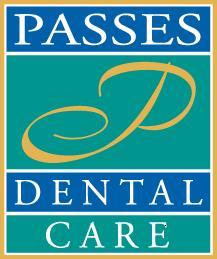Frequently Asked Questions
A. The American Dental Association (ADA) suggests scheduling dental checkups and professional cleanings at least twice a year. Our office also recommends a minimum of two visits annually to maintain optimal oral health.
During your first visit, a staff member will gather your medical and dental history. We will then conduct a thorough examination of your teeth and gums, perform an oral cancer screening, take X-rays if necessary, and complete a TMJ exam. After reviewing your dental profile, we'll discuss our findings with you. If treatments like a root canal, braces, or oral surgery are required, we'll either plan to provide that care in our office or refer you to a specialist. We'll also go over your treatment options and payment plans to ensure you find the best fit for your needs.
In subsequent visits, we will continue to examine your teeth and gums, perform oral cancer screenings, clean your teeth, and develop any necessary treatment plans. We'll address any pain or issues you might be experiencing and answer any questions you have.
Painless dentistry refers to our commitment to making your entire experience in our office as stress-free and pain-free as possible. We will explore treatment options that may not require local anesthetics and, whenever feasible, use methods that prioritize your comfort to alleviate any pain.
A. If you suspect you have a dental emergency, please contact our office immediately. We will do our best to accommodate you within our schedule during regular business hours. For emergencies that occur after hours, on weekends, or during holidays, please call our office for the doctor's emergency contact number.
A. Yes, we accept a variety of dental insurance plans and will handle the claims process for you once we receive your co-payment. Additionally, we offer a low-interest payment plan and accept most major credit cards to make your dental treatment more accessible.
Yes, there are several effective methods for teeth whitening, including in-office treatments and at-home options.
In-office bleaching: This procedure typically lasts one and a half to two hours, allowing you to read or relax during treatment.
Overnight bleaching: We will take impressions of your teeth to create a custom mouthguard that fits your bite. You will fill the mouthguard with a small amount of bleaching gel and wear it overnight or for a few hours each day. This process usually takes about two weeks.
Daily over-the-counter products: While these are available, it's essential to use any bleaching product under the supervision of a dentist. For optimal results, the ADA recommends consulting a dentist for a professional examination and diagnosis of the cause of tooth discoloration before starting any bleaching program.
We offer a variety of procedures to address these issues:
Porcelain veneers: These are custom made to resemble your natural teeth and can be applied to the fronts of your existing teeth. Veneers can effectively close gaps and enhance the overall appearance of your smile.
Dental bonding: This technique involves using a composite material to fill in areas of your teeth, addressing chipping and reshaping issues.
Both porcelain veneers and bonding are color-matched to blend seamlessly with the rest of your teeth, ensuring a natural look.
Adults should opt for a small to medium-sized toothbrush with soft to medium bristles. A smaller head allows for thorough cleaning, especially in hard-to-reach areas at the back of the mouth. Children should use small toothbrushes with soft bristles. For individuals with sensitive teeth, gentle, soft-bristled toothbrushes are recommended. With a variety of toothbrushes available, your dentist can assist you in selecting the most suitable option for your needs.
A. The American Dental Association recommends that you replace your brush every three to four months. With each use, the bristles become worn and cleaning effectiveness decreases. Depending on your oral health, you may need to replace your brush sooner. Typically, children's toothbrushes need to be replaced more regularly than those of adults.
A. Generally, manual toothbrushes are just as effective as powered toothbrushes. Children may find brushing with a powered toothbrush more exciting. If you have difficulty using a manual toothbrush, a powered toothbrush may be much more comfortable and easier to use. Regardless of what toothbrush you choose, be sure to select one you like and find easy to use.
A. No. However, we recommend you use a toothpaste that contains fluoride and carries the ADA Seal of Acceptance, which means it has been assessed for safety and effectiveness. Studies consistently show that fluoride helps strengthen and rebuild tooth structure and helps prevent dental decay.
To floss effectively, start with about 18 inches of dental floss. Wind most of it around your middle fingers, leaving one to two inches to work with. Use your thumbs and index fingers to guide the floss between your teeth. Gently slide the floss between your teeth, avoiding any snapping against your gums. Curve the floss around the base of each tooth to clean beneath the gum line thoroughly. Floss gently to prevent gum injury, and make sure to use a clean section of floss as you move from tooth to tooth.
A. As long as you brush and floss thoroughly, it does not matter if you brush then floss, or floss then brush. However, flossing before brushing enables the fluoride in your toothpaste to better reach the areas between the teeth.
A. A cap is the same as a crown. Both restorations are designed to restore a tooth that is severely broken, fractured, or decayed by literally covering or capping the tooth. Dentists often use the term “crowns,” but most people call stainless steel or gold restorations “crowns” and tooth-colored restorations “caps.”
A. Both are used to replace missing teeth. A bridge, sometimes called a fixed partial denture, fills a space previously occupied by a tooth. There are three main types of bridges, with a fixed bridge being the most popular; it consists of a filler tooth attached to two crowns that fit over existing teeth to hold the bridge in place. A partial denture is removable and typically consists of replacement teeth attached to gum-colored bases connected via metal framework. The denture is secured to natural teeth with either metal clasps or precision attachments, which are virtually invisible.
A. Not necessarily. While most teeth do need a crown following a root canal, not every tooth that needs a crown requires root canal treatment.
A. Our goal is to help you maximize your dental insurance benefits. We’ll carefully assess your policy to confirm coverage eligibility, and our financial coordinator will handle the submission of all claims to your insurance provider. Check here if your dental insurance is accepted.
Location
415 Northern Blvd, Floor 2,
Great Neck, NY 11021
Office Hours
MON8:00 am - 5:00 pm
TUE - WED10:00 am - 7:00 pm
THU9:00 am - 6:00 pm
FRI8:00 am - 5:00 pm
SAT8:00 am - 2:00 pm
SUNClosed




